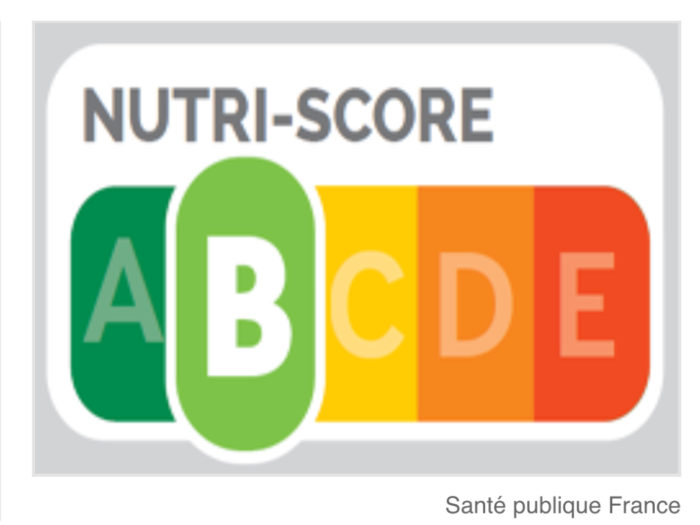Something happened in France at the end of last year.
The French government officially endorsed Nutri-Score on October 31, 2017 and that beautifully designed 5 color graphic pictured above because the official voluntary front of the package scoring system in France.
Why voluntary? Because France as a member of the European common market is not allowed to mandate a food label. However, several large French food manufacturers have already agreed to start using Nutri Score and a couple of enterprising young French entrepreneurs have already launched an app that reads barcodes and scores products.
Americans are used to French influence. Think French restaurants. Or Bordeaux wine and Brie cheese. Or Jacques Pépin. And most Americans are familiar with French food. We suspect the French eat perhaps a little more butter and cheese than most of us think is healthy. And we may also suspect the French have a more casual approach to food that allows for enjoyment without guilt. But I’m sure you’ll agree with me when I say that consumer package labeling is not the usual place one looks to for French inspiration.
Besides, why look to France when we have our own version of a front of the package label. Ever notice those little boxes with numbers and percentages on the front of packaged foods as you’re walking down a supermarket aisle? Sometimes there is just one box. Usually there are four boxes. Sometimes up to six boxes. Here’s what our Facts Up Front label looks like
The first box always lists calories per serving. The next three boxes provide information on nutrients to limit in the diet: saturated fat, sodium, and sugars. Subsequent boxes if they appear are used for nutrients to encourage.
The two systems reflect two very different approaches to the same problem. One isn’t necessarily easier or better than the other. A shopper who wants to choose healthier packaged items can succeed with either system. But because the approaches are so different, I decided to compare the two, detail those differences, and share my discoveries with you.
- The French system is color coded. Facts Up Front is not. So let’s say right up front that the color range makes the label more intuitive. Dark green indicates a healthier choice. A lighter shade of green and oranges in the middle. At the end, a deep reddish orange to indicate not so healthy choices.
- The French system is weight based. Facts Up Front is portion sized based. Our American system works well for comparing two brand of potato chips or whether or a portion of potato chips with a portion of an energy bar. The French system is based on a consistent weight and helps consumers compare calorie density and percentage weight. For example potato chips usually are 500 or more calories per 100 grams whereas most granola bars are closer to 400 calories per 100 grams.
- The French system sums up multiple nutrient numbers and presents the consumer with a single color coded score. Our American system puts 4 or more discrete values on the front of the package and it’s up to us put a picture together.
- The French system scores food groups. Our American system scores only nutrients. The combined weight of fruits, vegetables, legumes, or nuts is summed as a percentage of the total weight. The higher the percentage, the more points a product earns. Our American system focuses exclusively on nutrients, more specifically the nutrients to limit or avoid. There is a place for nutrients to encourage like fiber or protein or potassium, no mechanism for scoring a food group.
So there you have my run down of the differences. The best labeling strategy of course is that strategy that works for you and most folks tend to like the strategy they are used to. So most Americans will feel more comfortable with out American portion sized system and most French people will feel more comfortable with the French weight based system.
As for me I’m intrigued with the concept of including food groups in the scoring algorithm. Especially if those foods are intact whole foods. Fascinating idea and one worthy of more thought …



